Art, Travel and Culture. Guadalajara: Cifuentes and the Route of the Saviors
As we have ventured on numerous occasions, there were formerly numerous routes and roads that, crossing the Peninsula from north to south and from east to west, were arriving, as if from an imaginary game of the goose, in towns and cities that had, as a common denominator, the invocation of its main church: the Savior.
Hence, that metaphorically speaking, these routes, let's say, coincide, were called precisely like this in many areas: Route of the Savior.
Cifuentes, or the city of one hundred fountains - an exaggeration, which nonetheless indicates a well-provisioned place for such a vital element - is one of them, besides constituting, incidentally, one of the main population centers of that area so prolific and interesting of the province of Guadalajara, known as the Alcarria.
Or as Camilo José Cela said, there, at the end of the forties, when he made his first steps backpacking: La Alcarria is a beautiful country that people do not want to go (1).
Located in the upper part and at the same time the historic center of the city, being, in addition, neighbor of the convent and cloister of San Blas -santo to which, according to tradition, martyred in the nearby village of Gargolillos, as Cela also points-, The church of Santo Domingo, with its magnificent octagonal dome, is still attached, the Church of the Savior, although it has undergone numerous transformations throughout history, sinks its foundations at the end of the 13th century, conserving, nevertheless, part of those two main styles with which it was conceived: a late Romanesque and a Gothic style, revolutionary but imperfect, as pointed out by another genius of architecture, which was D. Antoni Gaudí i Cornet, which was beginning to emerge strongly in West.
Of the first period, that is to say, of that late Romanesque, a magnificent and at least surprising cover is conserved that, receiving the name of the Apostle Santiago, delights and at the same time shudders by its theme, reproducing the everlasting struggle between virtues and defects -whose victim collateral was a medieval society still imbued with darkness-, which was based on the classic poem by Prudencio, called La Psicomaquia.
Poem and theme, on the other hand, that later would be part, as well, of the great Christian-Muslim eschatological epics, developed by the trips to the other world of Muhammad and Dante, although another classic antecedent would have it in Virgil's Aeneid and the descent of the Trojan hero Aeneas to hell, not to go back to the Babylonian epics of the hero Gilgamesh.
But this topic, will be part of another story. By the way, it is in this part of the temple, oriented to the west, where there are also numerous brands of stonework in their ashlars.
Another of the details that stand out and located above this cover, is the magnificent rose window, of style, it could be said that Cistercian, whose crystals, seen from the inside and affected by the light, offer us the vision of Christ as a solar hero , the twelve apostles being the rays that, symbolically speaking, would illuminate the world.
The interior of the temple, precisely, overwhelms; well for its dimensions -both high and wide- well for that other and no less eternal battle between light and darkness that unfolds on the edge of that imaginary forest of palm trees, made up of columns, vaults, the points of key and the flying buttresses, that even formed by that raw and noble material that is the stone, would not stop being the simulated representation of the old sacred forests.
To this end, we should not be surprised by the reflection of San Bernardo, which is precisely in nature, between trees and rocks, where the best of schools is. In spite of the devastating effects of the Civil War, where the great patrimonial wealth contained in this monumental temple was practically lost, it still retains some interesting reminiscences, such as some original capitals, foliaceous austerity, some anthropomorphic motif in the keys of vault, as well as a magnificent carved pulpit, where a curious scene of Marian adoration is shown, composed by a Virgin enthroned below a very peculiar head, which although a priori represents the figure of God the Father, resembles, by its appearance, those others known as man-green, and where twelve characters are appreciated around.
Characters that, by coincidence with the number, could be taken as the apostles, if not for a detail, certainly surprising: the first character on the right, kneeling, is a woman. Far from thinking, in the very controversial figure of the beloved disciple, many times identified not with the Evangelist but with the Magdalena, we must contemplate the scene observing the homologous male character of the left side, also kneeling, as well as the shield that can be seen at the foot of the throne of the Virgin, and that possibly correspond to some of the noble families whose remains are in the adjacent chapels.
Among the best known, are the Alce, the Calderón and the Counts of Cifuentes. Possibly, it is the latter. To conclude, in the vicinity of Cifuentes, was located the monastery of Ovila, bought by the American press magnate, Randolph Hearst-the famous Citizen Kane of the Orson Welles film-in the aftermath of the Civil War and moved stone to stone to the United States.
Notes:
(1) Camilo José Cela: 'Journey to the Alcarria', Editorial Espasa Calpe, S.A., Austral Collection, eighteenth edition, 30-V-1989, page 19.
NOTICE: originally posted on my blog GUADALAJARA WAY IS DONE WHEN WALKING. Both the text and the photographs are my exclusive intellectual property. The original entry, where you can check the authorship of juancar347, can be found at the following address: https://jcarlos347-juancar347.blogspot.com/2015/07/la-ruta-de-los-salvadores-pasa-por. html
If you liked what you have read, I invite you to know the world of: @ juancar347
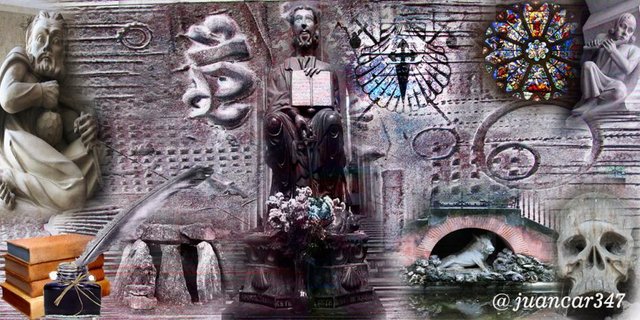
designed by: @txatxy
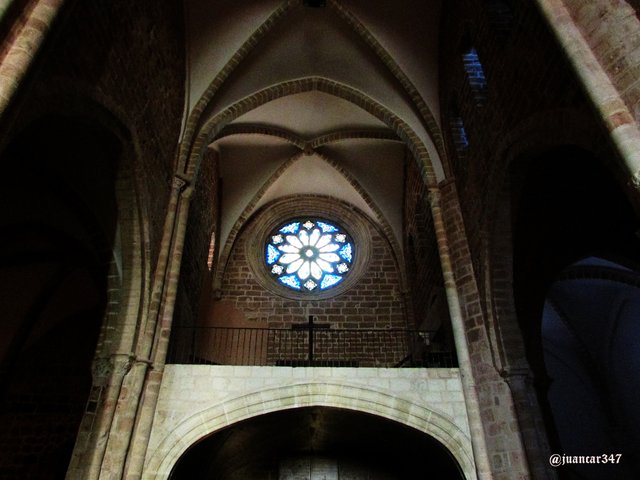
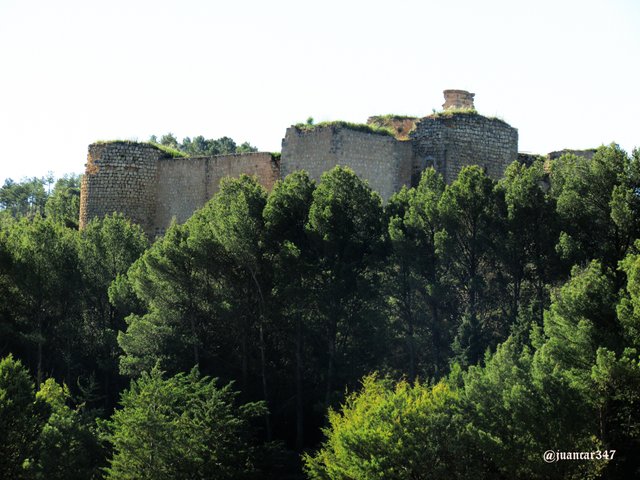
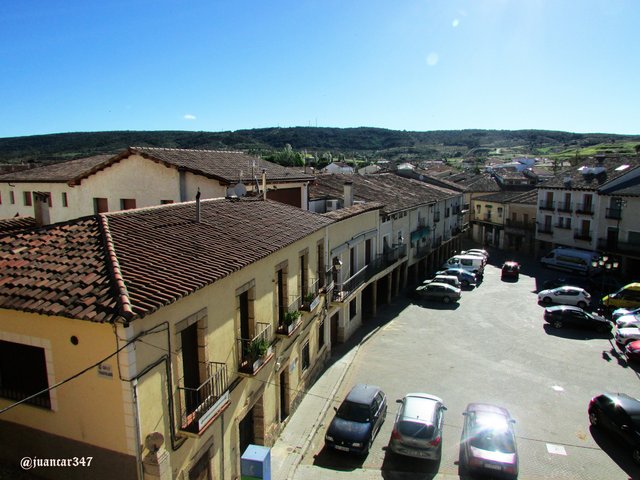
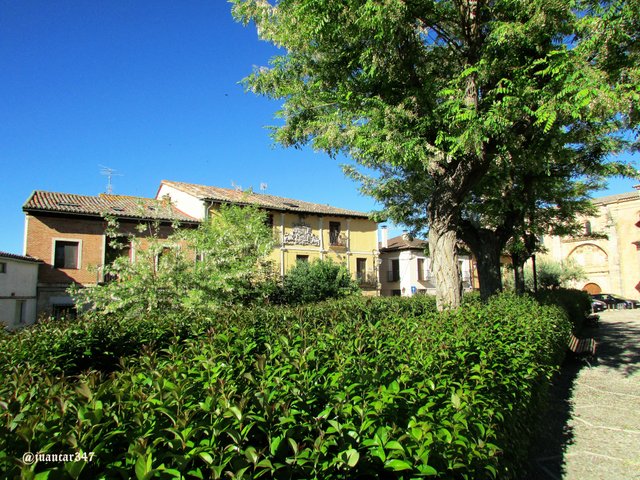
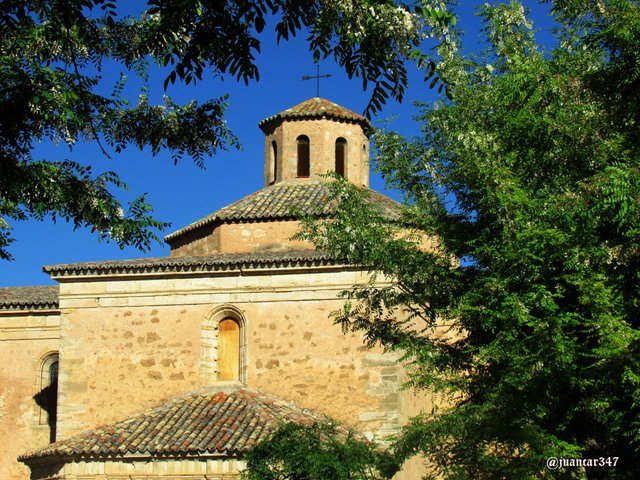
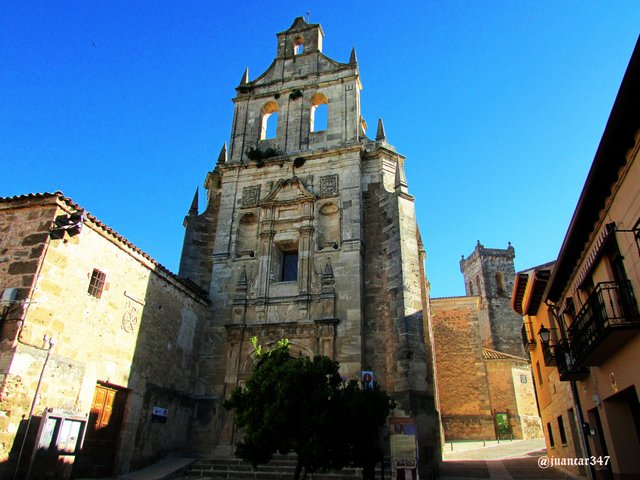
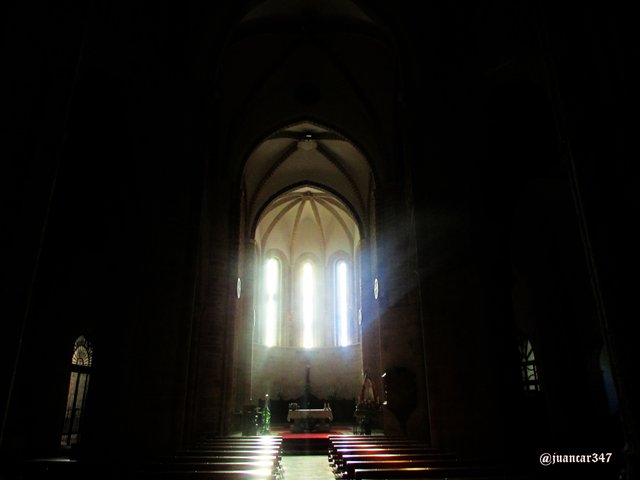
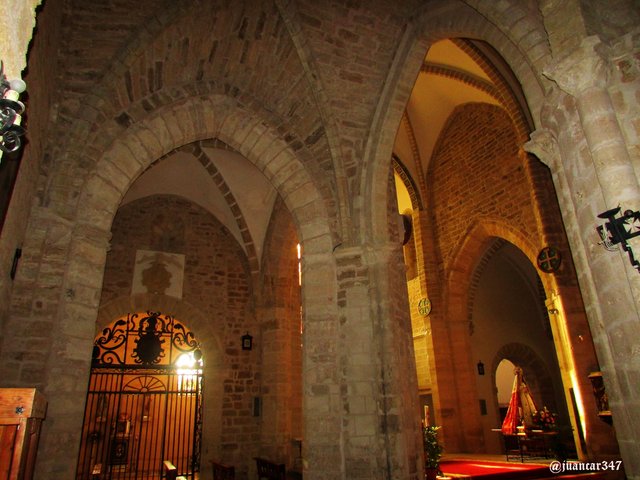
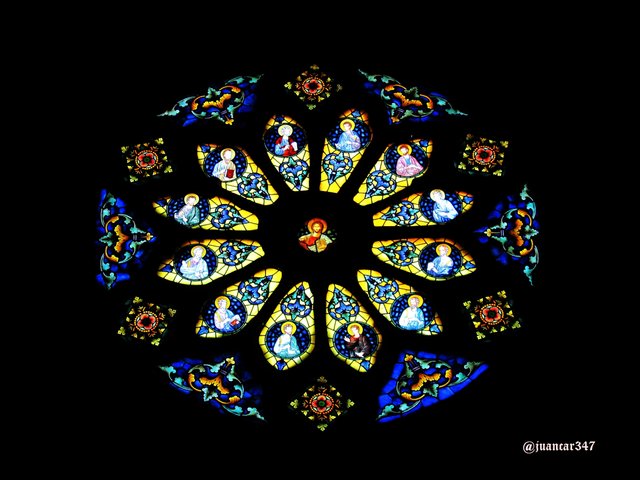
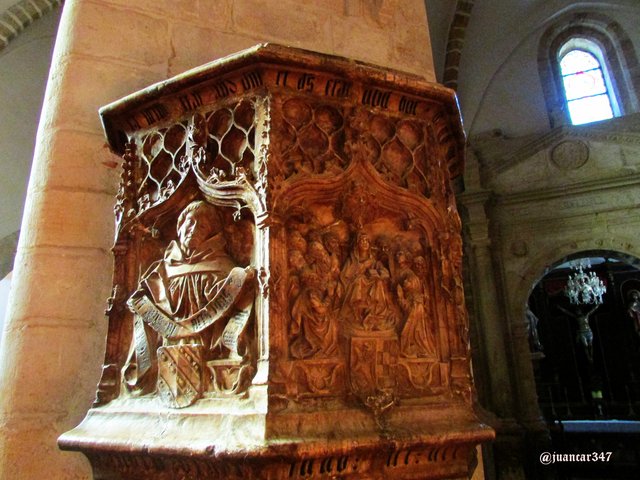
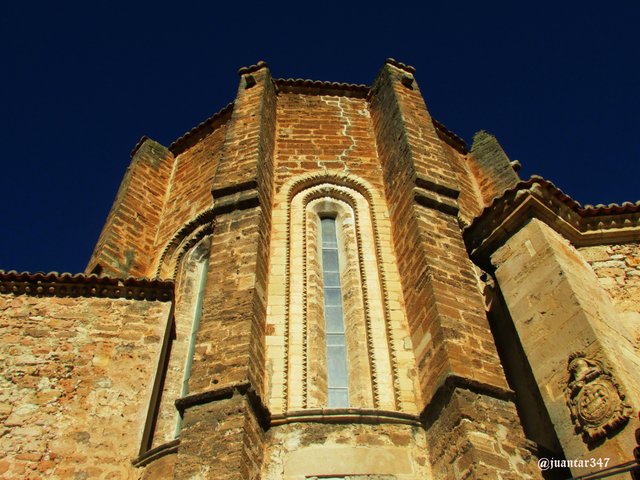
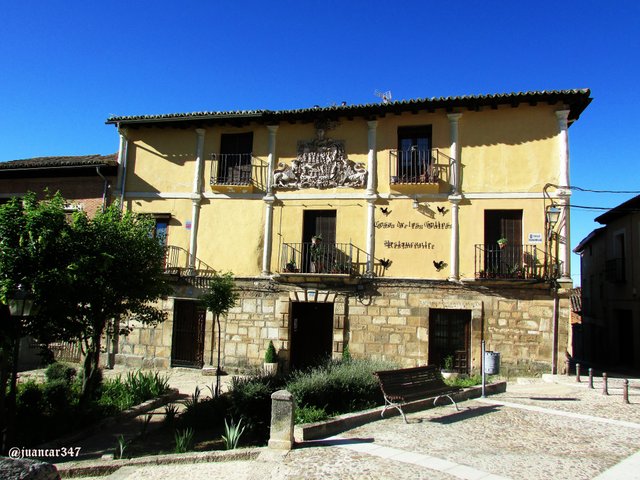

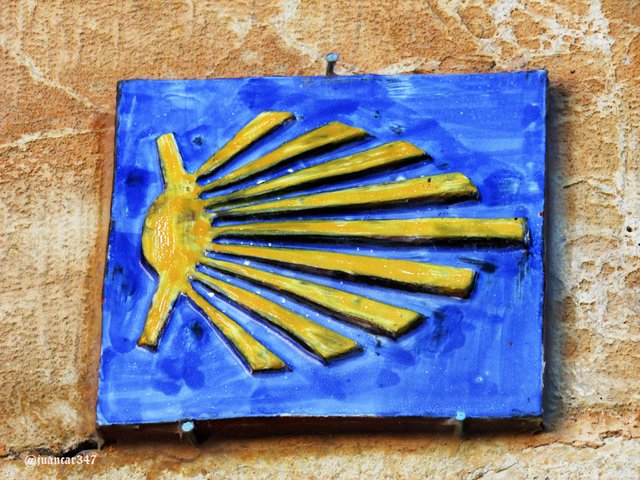

Muy interesante e ilustrativo este artículo sobre Cifuentes ; ciudad y templo principal. Debiste pasar un buen rato revisando las marcas de cantería de ese monumento románico tardío en tu particular viaje a la Alcarria. Tengo noticias de tu pasión por los maestros canteros. Supongo que hasta tendrás una guía de marcas de los más famosos.
En realidad, no quedan muchas y las que hay se localizan en lo poco que queda de la iglesia románica original, que es la portada de Santiago, que aquí no se muestra, y cuya escultura se supone que está basada en el poema de Prudencio, La Psicomaquia. Una portada interesante, la ejecución de algunos de cuyos elementos recuerda otras esculturas similares que se localizan en el románico de Navarra, bajo mi punto de vista. Tengo cientos de marcas de cantería, es cierto, pero nunca he tenido tiempo de clasificarlas. Sería imposible clasificarlas por autor, puesto que generalmente y salvo muy raras excepciones, eran anónimos. Pero es cierto que en base a ellas, se pueden seguir o intuir las rutas y lugares por las que pasaron, bien como canteros itinerantes o bien formando parte de cofradías y hermandades de canteros. Las más famosas, aquéllas que se desplazaron a través de los Pirineos y dejaron buena parte de sus sellos personales en los principales monumentos del Camino de Santiago, fueron las de Maître Jacques, los Hijos de Salomón y los Hijos del Padre Soubisse. Las dos primeras, al parecer, trabajaron en compañía de los templarios, o al menos eso es lo que piensan algunos historiadores. Curiosamente, y como dato anecdótico, te diré que algunas de esas marcas fueron utilizadas o copiadas en las marcas que se ponía también al ganado. En fin, que me enrollo. Como ves estos temas pueden dar lugar a muchas líneas y especulaciones. Pero en definitiva, Cifuentes, a pesar de todo, todavía conserva muchas cosas de interés.
La cantería, los maestros canteros. Algo siempre misterioso y apasionante.
Un mundo muy complejo y fascinante. No sólo peculiares en las marcas que dejaban, sino que también, en muchos casos, utilizaban su 'propio lenguaje'. Algunos todavía sobreviven, y puedo ponerte como ejemplo, a los canteros cántabros de la Trasmiera (muchos colaboraron en la construcción del monasterio de El Escorial), que todavía hoy siguen utilizando ese lenguaje tan peculiar, que por desgracia se llama igual que una tonadillera a la que no pretendo hacer propaganda: la pantoja.
Congratulations, Your Post Has Been Added To The Steemit Worldmap!
Author link: http://steemitworldmap.com?author=juancar347
Post link: http://steemitworldmap.com?post=art-travel-and-culture-guadalajara-cifuentes-and-the-route-of-the-saviors
Want to have your post on the map too?
Thanks